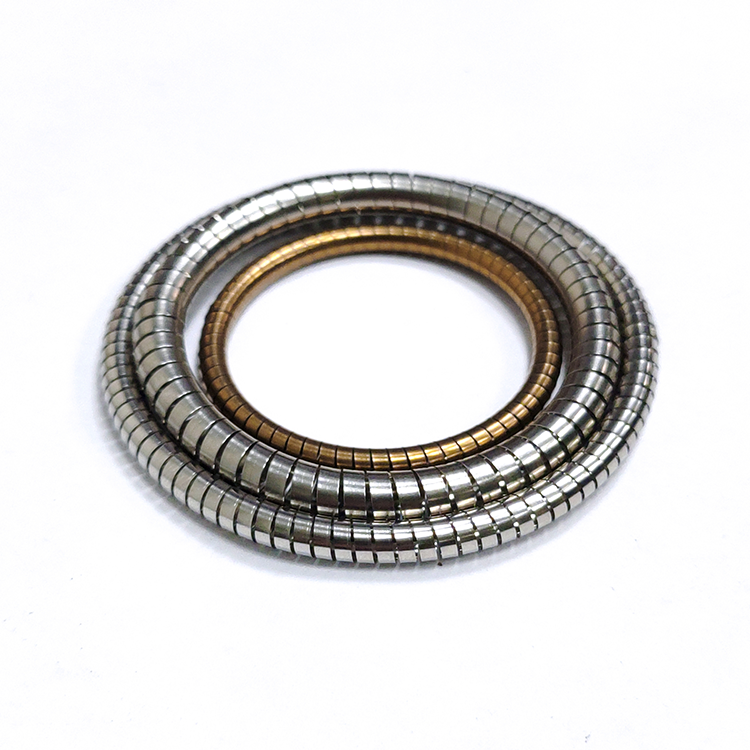
Helical springs for spring energized seals
In numerous fields of modern industry, sealing technology plays a crucial role. From the precision equipment in aerospace to the key components in automotive manufacturing, from the large – scale chemical reaction vessels in chemical production to the processing equipment in the food and beverage industry, reliable sealing is the foundation for ensuring the normal operation of equipment, guaranteeing product quality, and ensuring safe production. Spring energized seals, as high – performance sealing elements, have been widely used in various industries in recent years. The Helical springs for spring energized seals, as the core component of spring energized seals, is a key factor determining the sealing performance and service life of spring energized seals. This article will deeply explore the structural characteristics, working principles, material selection, performance advantages, application fields, service life, and factors affecting the service life of Helical springs for spring energized seals, and conduct a detailed analysis in combination with specific application examples.
The Helical springs get their unique shape which is similar to a helix structure. This shape is not designed randomly but is carefully considered to meet the special needs of spring energized seals. Its overall structure is composed of a continuous spiral, and the pitch, diameter and other parameters of each part are precisely calculated. This shape enables the spring to be stressed and exert force more evenly in all directions when providing elastic force. Compared with springs of other shapes, the Helical springs can better adapt to different sealing requirements and working conditions in spring energized seals. For example, in some rotating parts that need to be sealed, the Helical springs can evenly apply pressure in the circumferential direction, ensuring the stability and reliability of the seal.
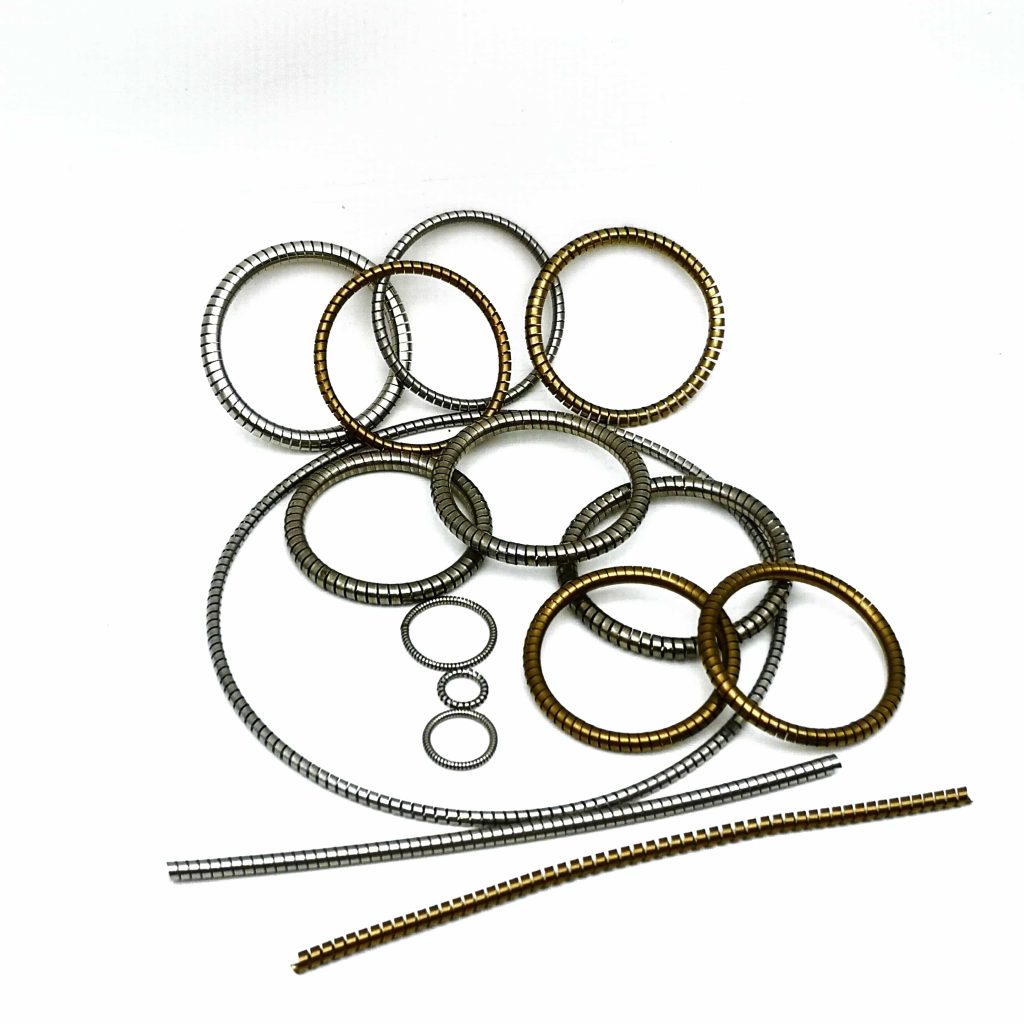
The structural design of the Helical springs endows it with high stability. Each part of the spring is connected in a spiral way to form a stable whole. When subjected to external forces, the spring can effectively disperse the stress and avoid local damage caused by stress concentration. This stability enables the Helical springs to maintain good performance in complex working environments, such as under conditions of vibration and impact, and provides continuous and reliable elastic force support for spring energized seals.
When the spring energized seal is installed in the sealing groove, the Helical springs are first compressed to form an outward tension. This initial tension prompts the sealing lip of the spring energized seal to closely adhere to the sealing groove, thus forming an initial seal. Even when the system pressure is zero, the initial elastic force of the Helical springs can ensure the basic effectiveness of the seal. As the system pressure increases, the Helical springs can not only maintain the original sealing state but also, through its own elastic deformation, further push the sealing lip to fit more closely to the sealing surface. The greater the system pressure, the greater the contact pressure between the sealing lip and the sealing surface, and the better the sealing effect. This pressure compensation mechanism enables the spring energized seal to maintain good sealing performance under different pressure conditions.
During the long – term operation of the equipment, the sealing lip of the spring energized seal will inevitably be worn. Another important function of the Helical springs is to compensate for the wear of the sealing lip. When the sealing lip becomes thinner or deformed due to wear, the Helical springs can, through its own elastic recovery, continue to provide sufficient pressure to the sealing lip to keep it in close contact with the sealing surface. This characteristic ensures that the spring energized seal can maintain stable sealing performance throughout its service life cycle, greatly extending the equipment’s maintenance cycle and service life.
In actual work, the working conditions of the equipment may change in various ways, such as temperature, pressure, and vibration. The Helical springs can adapt to these working condition changes by virtue of its good elasticity and structural stability. For example, when the temperature change causes the sealing material to expand or contract, the Helical springs can adjust the sealing pressure through its own deformation to ensure the effectiveness of the seal. When the equipment is subjected to vibration or impact, the Helical springs can also play a buffering role, reducing damage to the sealing lip and maintaining the sealing performance.
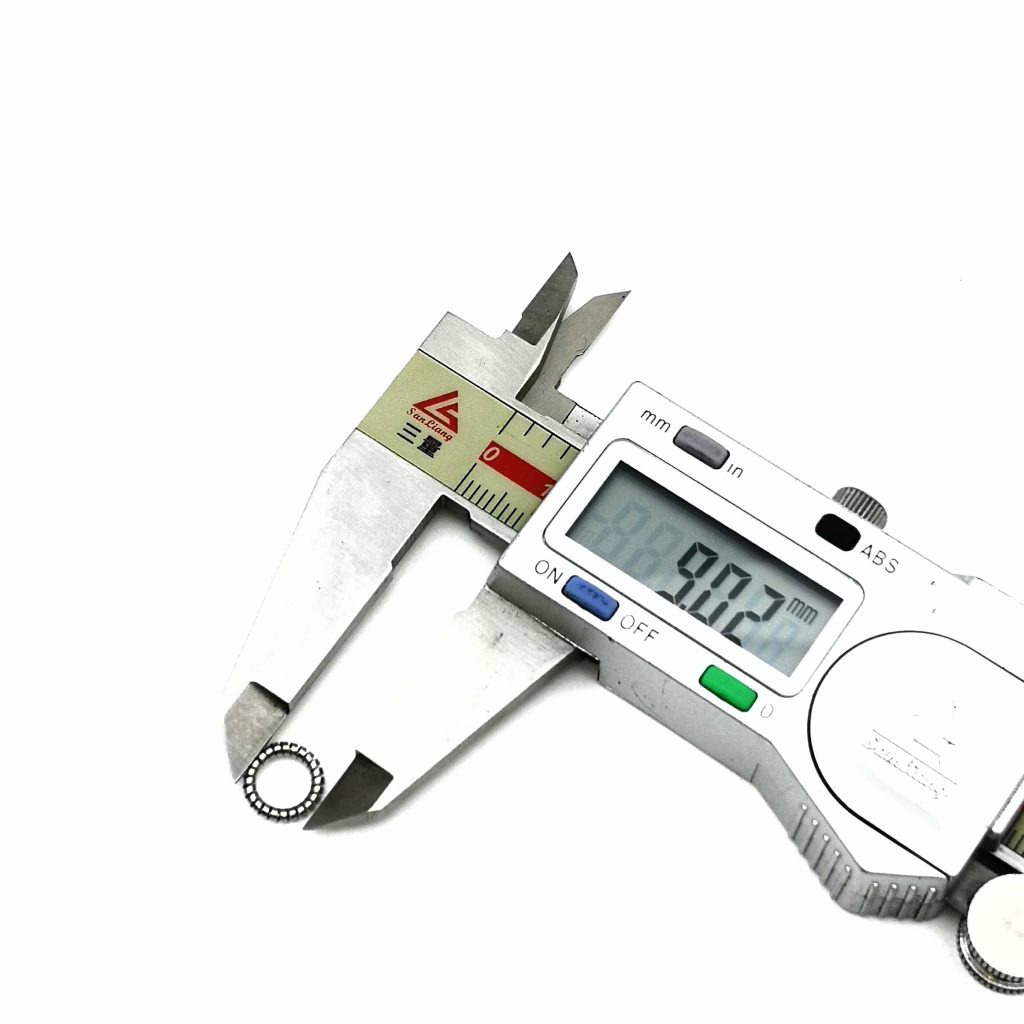
Different material properties have a significant impact on the performance of Helical springs. For example, the elastic modulus of the material determines the elastic deformation ability of the spring. Materials with a lower elastic modulus make the spring more likely to deform when stressed and can provide a greater elastic force. While materials with a higher elastic modulus make the spring more rigid, with relatively less deformation, but have better stability when bearing large loads. The strength and hardness of the material affect the bearing capacity and wear resistance of the spring. Materials with higher strength and hardness can withstand greater external forces and are less likely to wear when in contact with the sealing surface, thus extending the service life of the spring. In addition, the corrosion resistance of the material is directly related to the working reliability of the spring in harsh environments. In environments with a risk of corrosion, choosing materials with good corrosion resistance can effectively prevent the spring from being corroded and damaged, ensuring the sealing performance of the spring energized seal.
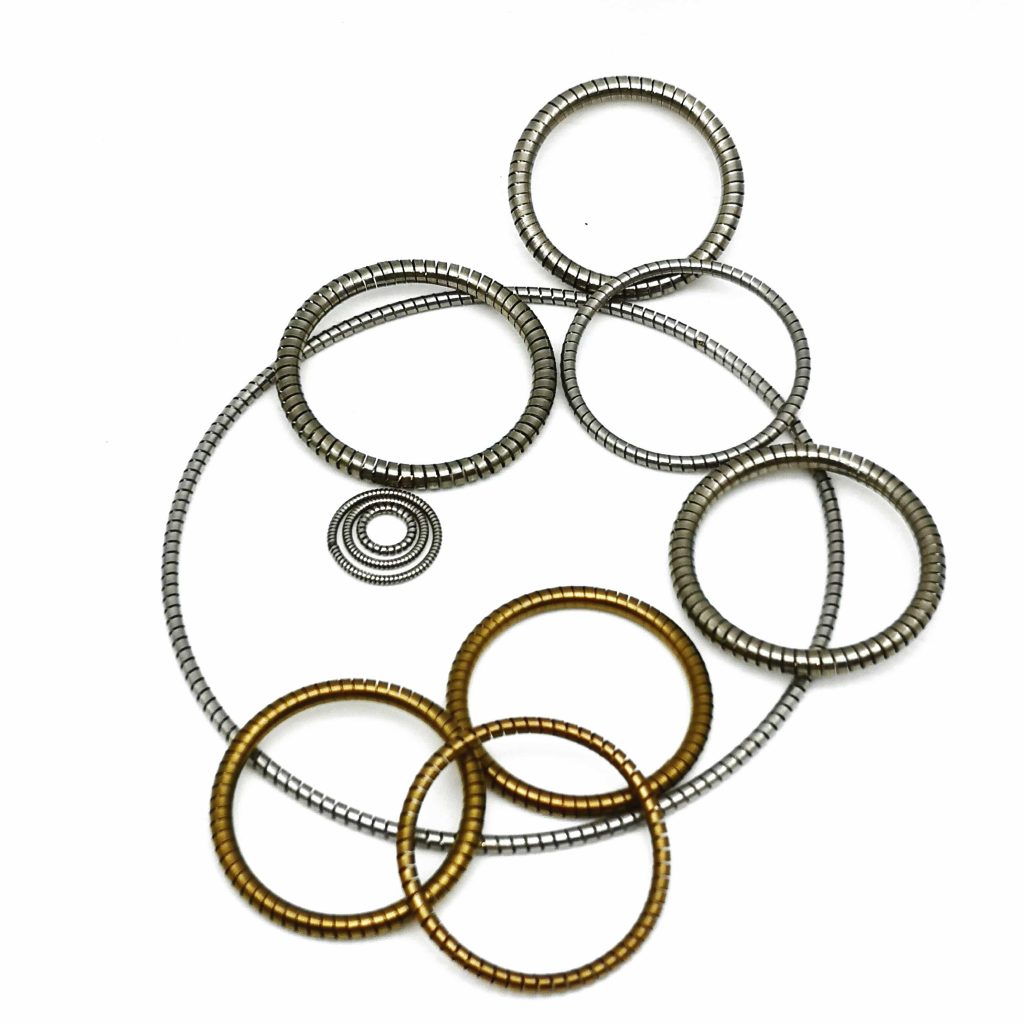
The Helical springs can closely fit the sealing part and provide a strong and uniform pressure for the spring energized seal, effectively preventing the leakage of liquids or gases. In chemical production, many chemical reactions need to be carried out in a sealed environment to prevent the leakage of reactants and the entry of external impurities. Spring energized seals with Helical springs can ensure the sealing performance of the reaction vessels and guarantee the smooth progress of chemical reactions. In the food and pharmaceutical processing industries, the hygiene requirements are extremely high, and any leakage may lead to product contamination. The good sealing performance of the Helical springs can effectively prevent food or drugs from being contaminated, ensuring product quality and consumer health.
The Helical springs can withstand high – pressure effects and still maintain good sealing performance under high – pressure working conditions. In the high – pressure pipelines of the petrochemical industry, the pressure of the medium is usually very high, putting forward extremely high requirements for the pressure – resistance ability of the sealing elements. The Helical springs can maintain stable elasticity under high pressure and provide sufficient pressure for the spring energized seal to ensure the sealing reliability of the pipeline. In the hydraulic system, the Helical springs can also maintain the sealing performance of the spring energized seal under the action of high – pressure oil, ensuring the normal operation of the hydraulic system.
Due to being made of corrosion – resistant materials, the Helical springs can resist the erosion of corrosive media such as acids and alkalis. In the electroplating industry, a large number of corrosive chemical substances such as acids and alkalis are used in the production process. The Helical springs can maintain stable performance for a long time in such harsh environments, ensuring the sealing performance of the electroplating equipment and preventing the leakage of corrosive media from causing damage to the equipment and the environment. In the marine engineering field, the equipment is long – term in a humid and saline marine environment. The corrosion – resistance performance of the Helical springs enables it to work reliably in this environment and provide a guarantee for the sealing of marine equipment.
The surface of the Helical springs is smooth, and during the contact and relative movement with the sealing surface, it can reduce friction and avoid excessive wear. In mechanical seals, the friction between the sealing surfaces will cause the wear of the sealing elements, affecting the sealing performance and service life. The wear – resistance performance of the Helical springs can effectively reduce its own wear rate and ensure the long – term stable operation of the sealing device. In some equipment that needs to be frequently started and stopped, the wear – resistance performance of the Helical springs is particularly important and can reduce the risk of sealing failure caused by wear.
The Helical springs can generally work normally within a relatively wide temperature range and can meet the sealing requirements in high – temperature or low – temperature environments. In the aerospace field, the equipment will experience extreme temperature changes during flight, from the extremely low temperature at high altitudes to the high temperature near the engine. The 헬리컬 스프링 can maintain good elasticity and sealing performance under these extreme temperature conditions, ensuring the safe and reliable operation of aerospace equipment. In the high – temperature reaction environment of the chemical industry, the Helical springs can also withstand the test of high temperature and provide stable support for the sealing of the reaction equipment.
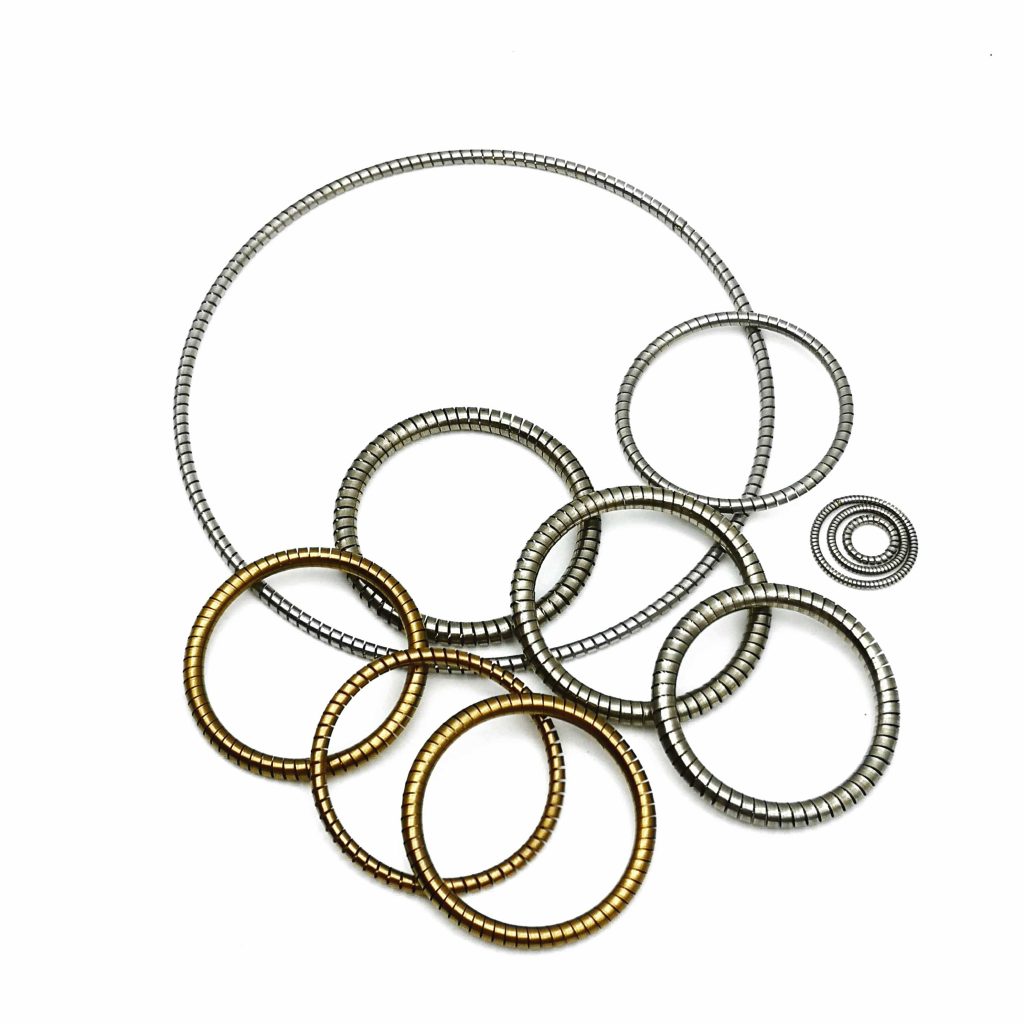
In the fuel delivery system of rocket engines, the Helical springs play a crucial role. Rocket engines need to eject a large amount of fuel in a very short time to generate a strong thrust. This requires the fuel delivery system to have extremely high sealing performance to prevent fuel leakage. The Helical springs are used for the sealing of fuel pipelines and can ensure that there is no fuel leakage under the extreme working conditions of extremely low temperatures such as liquid oxygen/methane and high pressures. For example, the fuel valves of the SpaceX Starship use carbon – fiber – reinforced PTFE combined with Helical springs for spring energized seals, effectively ensuring the safety and reliability of rocket launches. In the attitude control system of satellites, the sealing of the hydraulic system is also inseparable from the Helical springs. Satellites need to precisely adjust their attitudes in space, and the stable operation of the hydraulic system is of great importance. The Helical springs can provide reliable elastic force for the spring energized seals of the hydraulic system in the vacuum and low – temperature environment of space, ensuring the normal operation of the attitude control system.

In large – scale chemical reaction vessels, the materials are usually corrosive and the reaction conditions are high – temperature and high – pressure. The Helical springs are used for the sealing of the agitator shaft of the reaction vessel, can withstand high – temperature, high – pressure, and chemical corrosion, prevent material leakage, and ensure the stability and safety of the reaction process. In chemical fluid delivery pumps, the Helical springs can be used for the sealing of the pump shaft to ensure that there is no leakage when transporting corrosive and high – pressure chemical fluids. For example, in a factory producing sulfuric acid, sulfuric acid is highly corrosive, and the pumps for transporting sulfuric acid need to use spring energized seals with Helical springs to ensure sealing performance and prevent sulfuric acid leakage from causing harm to the equipment and personnel.
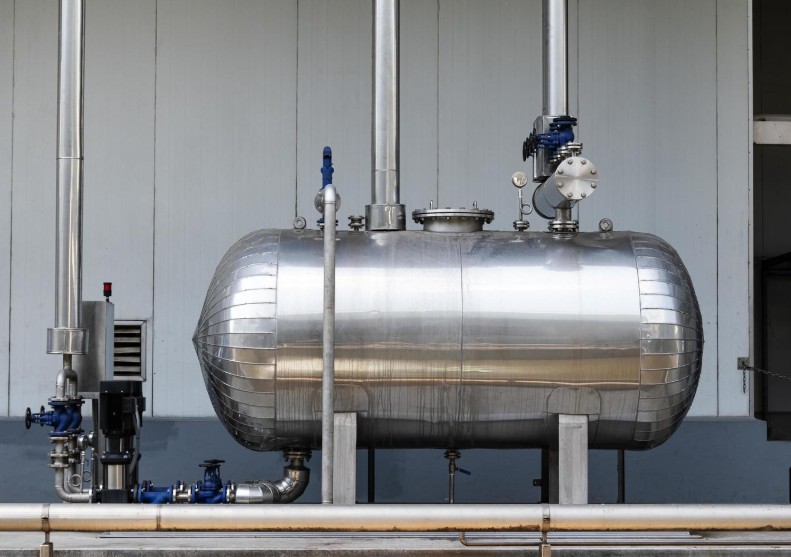
In the turbocharging system of automobiles, the Helical springs are used for the sealing of the rotating shaft of the turbocharger. When the turbocharging system is working, the temperature at the rotating shaft is high and the speed is fast. The Helical springs can maintain good sealing performance under the working conditions of high temperature and high – speed rotation, prevent the leakage of engine oil and supercharged gas, and improve the efficiency and reliability of the turbocharging system. In the automatic transmission of automobiles, the Helical springs can be used for the sealing of the control valve body and piston, ensuring the stable pressure and sealing performance of the transmission oil, and enabling the transmission to shift accurately and smoothly. For example, in some high – performance automobiles, the working load of the automatic transmission is relatively large, and the requirements for sealing performance are higher. The application of the Helical springs can effectively improve the performance and durability of the transmission.
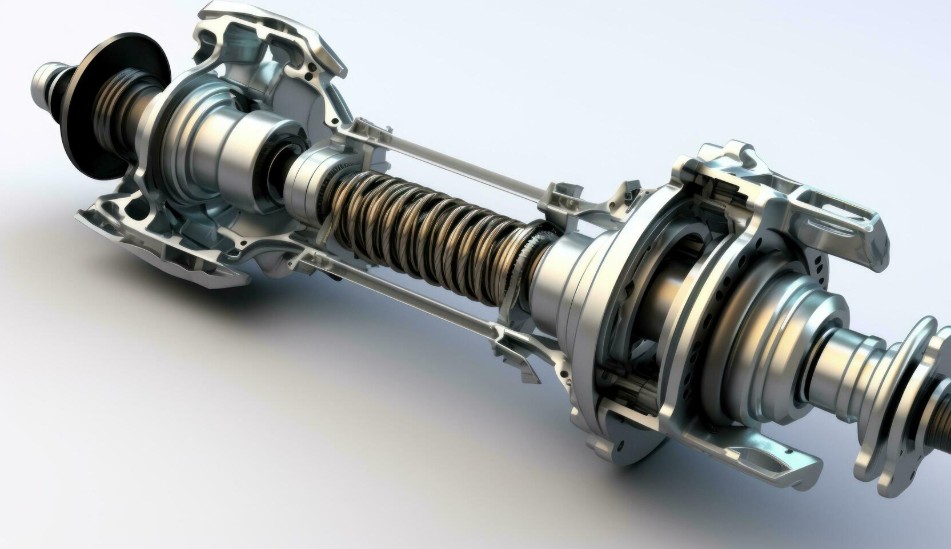
In the filling valves of beverage filling production lines, the Helical springs ensure that there is no beverage leakage during the filling process, prevents beverage overflow from causing waste and pollution, and at the same time ensures filling accuracy. In the sealing of the agitator shaft of food processing equipment, the Helical springs can maintain stable performance in humid and high – temperature environments, prevent food material leakage, and ensure food hygiene and quality. For example, in a factory producing fruit juice, the filling valves use spring energized seals with Helical springs, which can ensure that the filling volume of each bottle of fruit juice is accurate and prevent fruit juice leakage, ensuring a clean and hygienic production environment.
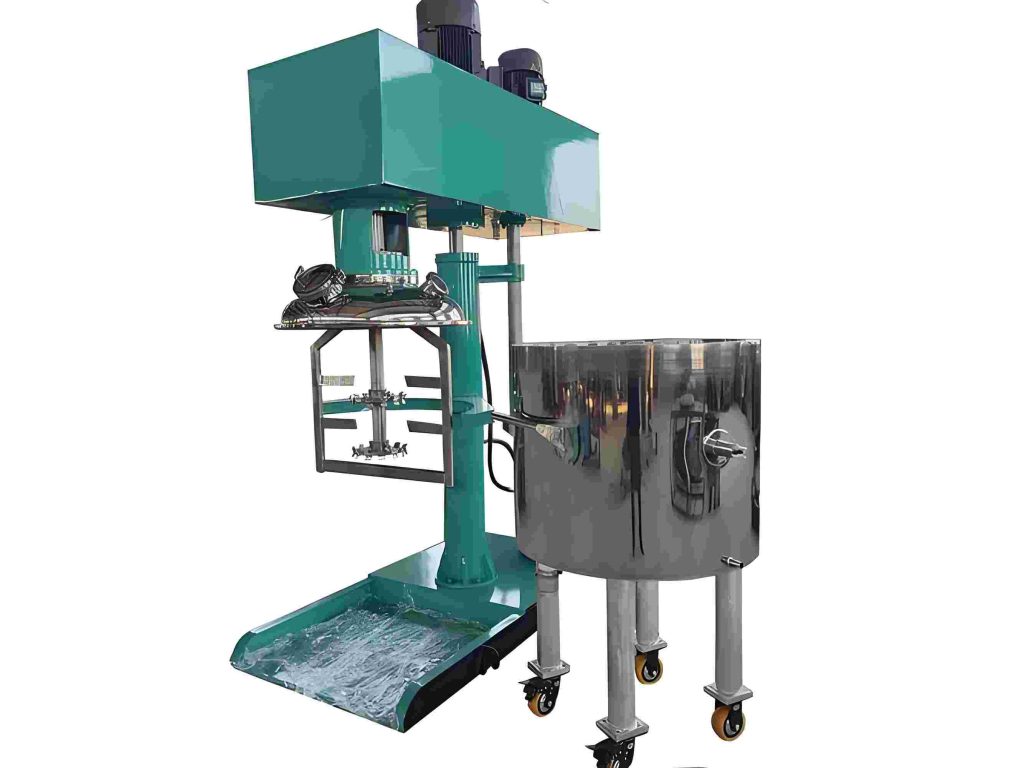
In the vacuum coating machines of semiconductor manufacturing equipment, the Helical springs are used for the sealing of the vacuum chamber. Vacuum coating needs to be carried out in a high – vacuum environment. The Helical springs can provide reliable sealing under vacuum conditions, prevent the entry of external air into the chamber, and ensure the coating quality. In the optical path system of lithography machines, the Helical springs are used for the sealing of the connection parts of optical elements, preventing dust and impurities from entering the optical path system and ensuring the lithography accuracy. For example, in the lithography machines for producing high – end chips, the sealing requirements for the optical path system are extremely high. The entry of any tiny impurities may affect the manufacturing accuracy of the chips, and the application of the Helical springs can effectively ensure the normal operation of the lithography machine.
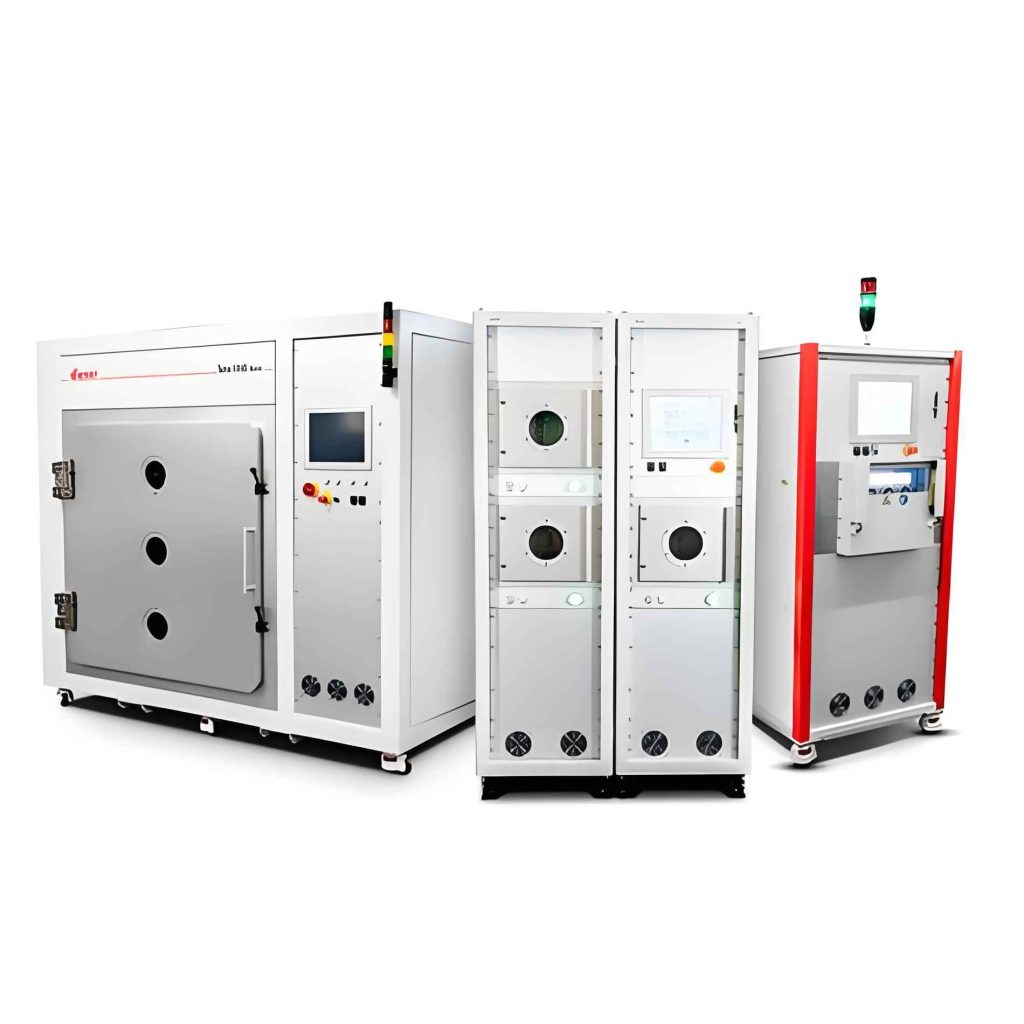
The service life of Helical springs can be measured from multiple perspectives. From the perspective of the number of uses, under normal working conditions and general use frequencies, similar to the service life of ordinary springs, it may reach about 50,000 to 500,000 times. However, if it is used in some special equipment with extremely high requirements for accuracy and stability and good working conditions, the Helical springs, which are specially designed and manufactured, may have a service life of 10 million times or even higher. From the perspective of service time, in the automotive and other fields, if it is analogized to the service life of automotive springs under normal use conditions, it may be necessary to consider inspection or replacement after about 3 years or driving about 100,000 kilometers. In relatively static equipment with a good environment, if the medium is stable and the temperature and pressure conditions change little, the Helical springs may be used for 5 years or even longer. For example, in the sealing of some static food storage equipment, if there are no unexpected damages, it can be used for a long time.
In the shale – gas supercritical CO₂ fracturing, the spring in the H₂S – resistant HNBR spring energized seal has a service life of more than 5,000 hours under a pressure of 70MPa. This case shows that under specific working conditions, the service life of the Helical springs is comprehensively affected by various factors. In such high – pressure environments with corrosive media, the material selection, structural design, and manufacturing process of the spring all need to meet special requirements to ensure that it has a sufficient service life. By using H₂S – resistant materials and optimized structural designs, this spring can still maintain good performance under harsh working conditions and provide reliable support for the sealing of the spring energized seal.
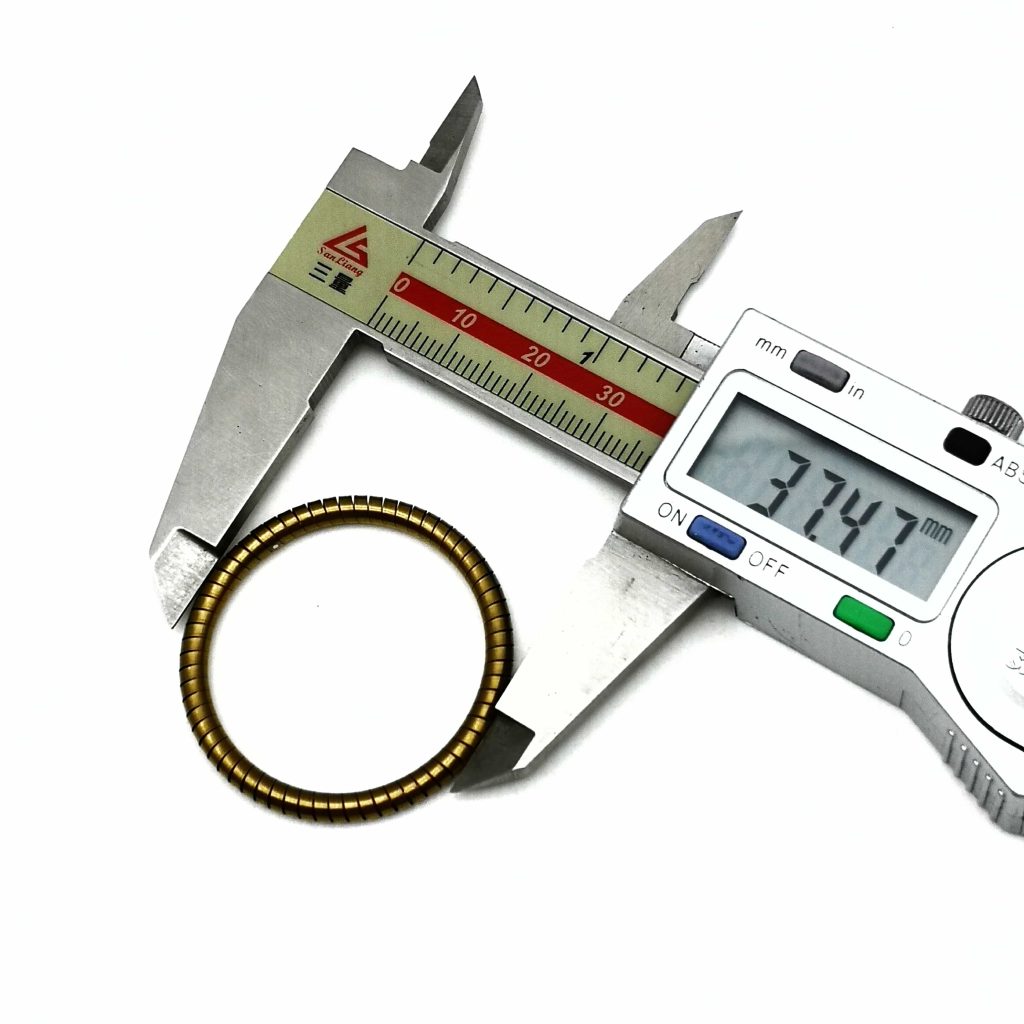
With the continuous progress of materials science, the future development of Helical springs for spring energized seals will focus on material innovation. This involves the development of new alloy materials with enhanced properties. For example, researchers are working on creating alloys that offer higher strength, better fatigue resistance, and improved corrosion resistance. In the aerospace industry, where the requirements for components are extremely high, new alloys with exceptional high – temperature resistance may be developed. These alloys would enable Helical springs to operate more effectively in the harsh conditions of space, such as extreme temperatures and radiation. At the same time, there is an increasing emphasis on the environmental friendliness of materials. The development of recyclable materials for Helical springs is becoming more important to meet the growing demand for sustainable manufacturing.
Advances in computer – aided design (CAD) and finite – element analysis (FEA) technologies are enabling more precise and efficient structural optimization of Helical springs. CAD allows designers to create detailed 3D models of the spring, facilitating the exploration of different design concepts. FEA, on the other hand, can simulate the mechanical behavior of the spring under various loading conditions. By using these technologies, the shape and size of the Helical springs can be optimized to achieve a more uniform stress distribution. This reduces stress – concentration points, thereby improving the spring’s fatigue life. Additionally, structural optimization can make the spring more adaptable to different working environments and conditions. For example, in some applications with limited space, an optimized spring design can ensure maximum performance while minimizing the overall size.
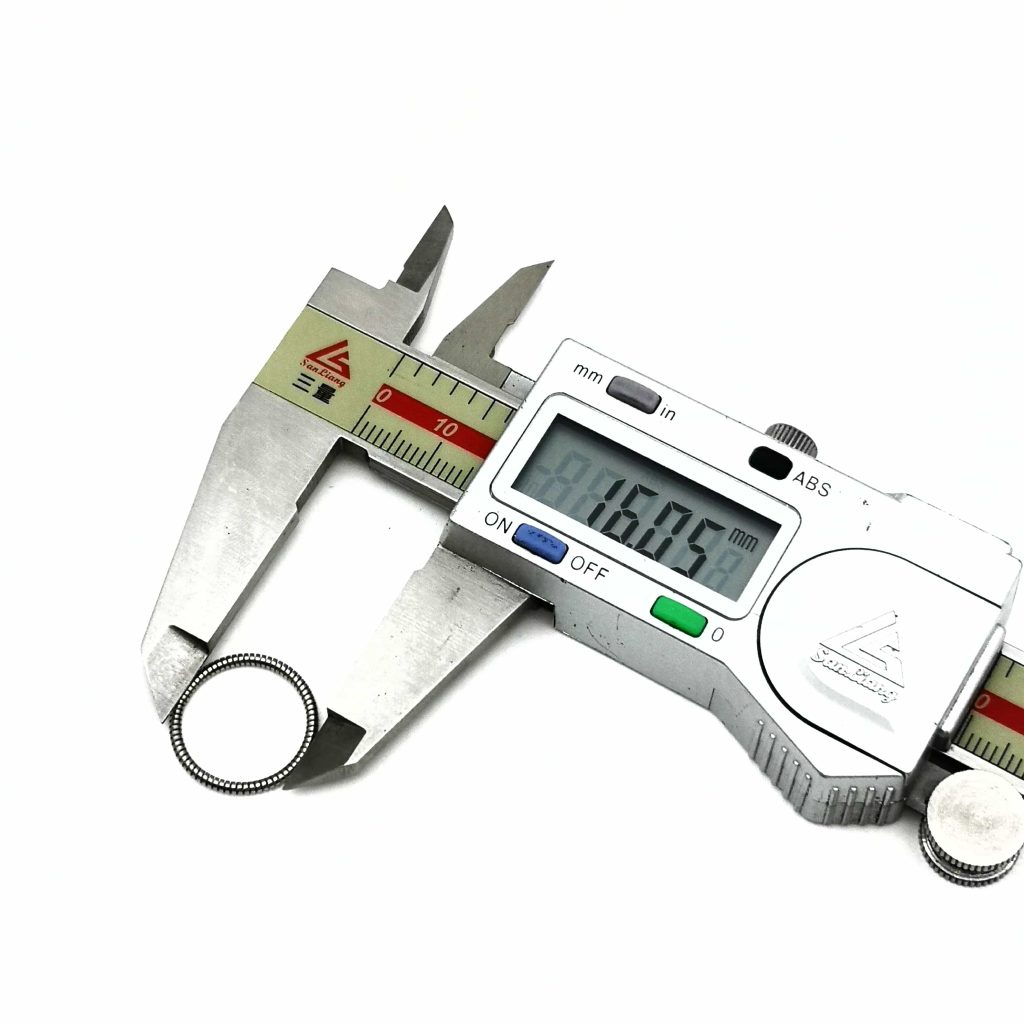
The improvement of manufacturing processes is a key factor in enhancing the quality and performance of Helical springs. In the future, more advanced manufacturing techniques, such as additive manufacturing (3D printing), precision forging, and high – speed stamping, will be increasingly adopted. Additive manufacturing offers the ability to create complex spring structures with high precision. This not only reduces material waste but also allows for the customization of spring properties according to specific application requirements. Precision forging can produce springs with high – dimensional accuracy and improved mechanical properties. High – speed stamping, on the other hand, can significantly increase production efficiency. Moreover, the integration of automation and artificial intelligence in the manufacturing process will reduce human error and ensure more consistent product quality.
그리고 헬리컬 스프링 for spring energized seals is an essential component in many industrial applications, playing a critical role in ensuring reliable sealing performance. Its unique structural features, excellent performance advantages, and wide range of applications make it an indispensable part of modern sealing technology. However, its service life is influenced by multiple factors, including material characteristics, working environment, design and manufacturing quality, installation and use methods, and maintenance and upkeep practices. To ensure the long – term and reliable operation of Helical springs in different working conditions, a comprehensive approach that considers all these factors is necessary. As technology continues to advance, Helical springs are expected to benefit from material innovation, structural optimization, and manufacturing process improvements. These advancements will not only enhance their performance but also expand their application scope, contributing to the development and progress of various industries.